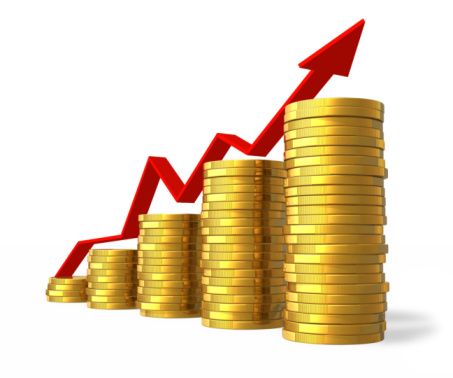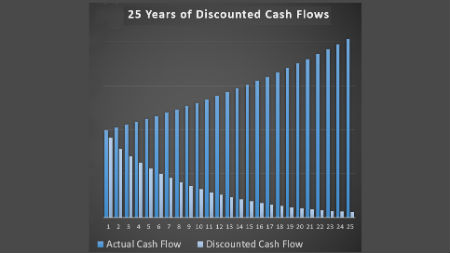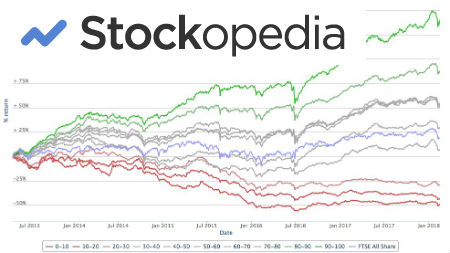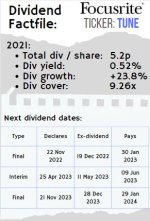Dividend Growth Investing

Dividend growth investing aims to take advantage of one of the most enjoyable and beneficial elements to dividends - their ability to grow!
Seeking out companies which consistently increase their dividends has also been shown to have other benefits for the investor, predominantly in terms of the security of the company and its stock price in bad economic times.
|
|
I have yet to meet someone who doesn't enjoy getting regular pay rises. That's exactly what dividend growers do. Year in year out they raise their dividends per share giving you, the investor, larger and larger paychecks. If you like the sound of ever increasing paydays then maybe dividend growth investing is for you. This page examines what to look for when searching for dividend growers and how companies can afford to give you pay rises year after year. |
What's the difference between dividend growth investing and a simple dividend investor?
If you scan through the financial pages/websites and look for stocks with the highest yields then you may well find some stocks that give you a good INITIAL dividend yield.
The problem with high yield stocks is that often the dividend payout ratio is high meaning that there is less cash retained in the business to invest in future profit and, ultimately, dividend growth. A very high payout ratio could also signal that the dividend might be under threat.
Dividend growth investing focuses on the ability of a company to grow its payouts over time. If you are patient this could lead to higher payouts in the long run. For example, in 2017, Disney (see our case study), paid $1.49 per share in dividends, whereas in 2012 it paid $0.75 per share.
That means you've almost doubled your income from Disney stock over the last four years. On the contrary, AT&T's dividend has paid $1.92 as a 2016 annual dividend, where as it paid $1.76 in 2012. The dividend here has not even grown 10%.
What are the advantages to dividend growth investing?
1) Dividend growers can help your income grow ahead of inflation:
This is very important as if you are looking to retire on dividends and your income does not go up with inflation then you will be worse off as the years go by.
This is why bond prices react so badly when there is even a hint of future inflation. Bonds (generally) have a fixed coupon (that's why it is called fixed income!) so the payouts do not go up. Dividends that grow with inflation mean that your income will be protected in real (inflation adjusted) terms.
2) Some studies have shown dividend growers to outperform
According to Manulife Asset Management, the total returns from dividend growers has been 10.1% per annum (pa) from the S&P 500 between 1921 and 2014, compared to 9.3% pa for all dividend paying stocks, 7.6% from dividend maintainers and 2.6% from non-dividend paying stocks.
Whilst we feel the price you pay for your stocks is very important to your future returns, there is no doubt that the potential of a company to grow its dividends will potentially give you very strong tailwinds in your quest for higher returns. The strong performance of dividend aristocrats (companies that have grown their dividends for at least 25 years) also backs up the fact that dividend growers have outperformed the general market over long periods of time.
3) Dividend growers help you with compound interest
With dividend growers you can effectively get compound interest working for you in several ways.
Firstly, the company itself is effectively harnessing the power of compound interest as they are re-investing retained earnings for you which should result in higher future income.
Secondly, you can re-invest the dividends you receive yourself so that you can buy more shares in the same or a different business to help build your future income.
Finally, if the company has pricing power then it will be able to raise its prices without hurting its sales. This means that the company should protect you from any inflationary pressures and possibly increase its margins over time which will help you receive higher payouts from the company.
4) Some studies have show dividend growers to have less price volatility
According to the Manulife study, dividend growers have provided lower volatility than all-dividend payers and non-payers.
When measured by standard deviation. Dividend growers have had 15% annualized volatility compared to 18% and 19% for dividend payers and dividend non-payers respectively. This can help you when there are periods of price volatility and perhaps makes it less likely you would sell out at a time of depressed valuations.
How do companies grow their dividends?
To be a dividend growth investor, you need to understand how companies grow their dividends so you can focus on sustainable dividend growers.
For dividend growth to be sustainable the earnings per share will need to grow over time. Most businesses will increase their earnings per share over time by investing their retained earnings.
Retained earnings are their past profits that have not been paid back to shareholders. They can invest their retained earnings by purchasing new businesses or investing in the current business (such as increasing their capital expenditure). They could also use their earnings to buyback their shares (which should increase earnings per share) or to reduce their debt (decreasing the interest charge).
We feel that dividend growth investing should mean focusing on companies with good earnings stability, a high return on equity, a strong dividend history, and pricing power.
For another take on dividend growth investing, check out the Investopedia page: www.investopedia.com/articles/basics/04/072304.asp
Got a BURNING dividend question for 6-figure dividend earner Mike Roberts?
What is it that you really want to know about investing?
Submit a query and Mike will write a page in response.
PLEASE NOTE - in accordance with our terms of use, responses are meant for education / interest only. We do not give specific financial advice.



